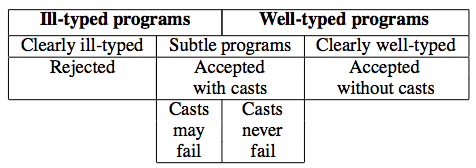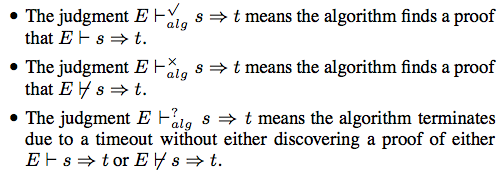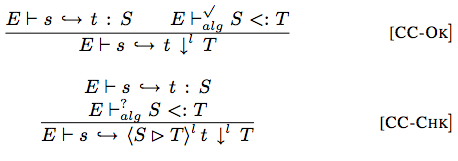NB I left Pomona college in 2021. But they’re hiring again, and I recommend you consider it!
It’s my fifth year as a tenure-track assistant professor at Pomona College, a small liberal arts college (SLAC) in Claremont, CA. You may have read about why mathematicians might find the liberal arts setting appealing. Here’s why I think computer scientists might, too. I’ll start with what I love about working at Pomona and then I’ll talk about what I don’t.
Research freedom
First and foremost, I get to do the research I want to do. Neither the department nor the institution rely on overheads to operate, so there’s no grant pressure. Without graduate students, who require both financial support and through-lines of work for a dissertation, I can choose my focus freely.
The “without graduate students” part isn’t for everyone. If your research needs a lab of ten students to build enormous systems, then a SLAC may not be the right place. But if you want to build smaller systems, like my work on Smoosh, then a SLAC could be great; if you’re theoretically inclined, I think a SLAC is an ideal home.
Research expectations vary at liberal arts schools, and I’d count Pomona among the more robust, research-wise—the tenure evaluation split between research and teaching is somewhere between 50/50 and 40/60. If you’re sick of research and want a teaching-only position, then SLACs may not be the right fit.
I’ve been particularly enjoying the freedom to pursue side projects. I spent some of this two summers ago working with two undergraduates to write software for controlling the art department’s CNC router, marrying two of my interests: programming and woodworking. It was a good experience for the students, and it might even lead to a publication, though I never expected it to. While I might have had the time and resources to do such a thing at a larger institution… would I have bothered to lay out so much time on a project unlikely to produce anything for my tenure case?
Finally, Pomona has a generous junior leave policy. I just spent a year with Steve Chong (thanks, Steve!). I spent a year doing nothing but research, and my productivity itch has been pretty well scratched. You can make it work.
Students
Pomona has an 8-to-1 student-to-faculty ratio, with a 2:2 teaching load; some SLACs might have more teaching, like 3:2 or even 3:3. I couldn’t handle a heavier load—I wouldn’t get enough research done to be happy with myself—but I enjoy teaching well rounded students in moderately sized classes (my elective next semester will have no more than 20 students). The high end of students is astonishingly high—juniors and seniors working at an early graduate student level—and it’s rewarding to work with them on things that actually advance my research. My field (programming languages) requires a lot of background to do much of anything; when I came to Pomona, I didn’t expect that I’d be able to do any of my actual research with students. But I’ve been pleasantly surprised—I’ve been able to have one or two students at a time working on real PL research; they go on and do cool things.
Community
Our department of nine tenure-track professors is convivial, genial, and collaborative. It’s not that we’re magically free of disagreement, but rather that we can disagree productively. I’ve spent significant time in CS departments since high school, and many of them are lovely places to be—but I’m charmed by my department’s mellow, friendly relations.
On a larger scale, Pomona College has roughly 200 professors. I’m pleased to have friends and colleagues from many different departments and disciplines across Pomona’s campus (and beyond—there are 400 more faculty at the other Claremont Colleges—the Consortium here is an idiosyncratic collection of institutions). As someone who majored in both computer science and Egyptology, colleagues with diverse interests enliven and enrich my days.
What’s more, Pomona has a culture of service; service is a contribution, a lending of myself that makes me feel like I’m part of the college. Starting from their second year, all professors are expected to sit on college-wide committees—the sort of thing that one might not do until a much higher rank elsewhere. In my committee work, I help steer Pomona’s course; in so doing, I invest in the school as an enterprise. Sure, that investment takes the form of extra meetings and work that doesn’t directly serve me or my research or my teaching or my department. I can imagine a SLAC would be a frustrating place to be for someone who wasn’t community-minded or who was unwilling to take part in bureaucracy.
Values
Many of my values align with institutional goals and practices. Pomona’s diversity plan is a strong, aspirational one—the school is very dedicated to equity, with a focus on students who are the first in their family to attend college, students from low-income families, and students from other underrepresented minorities. I’ve been particularly pleased to see the way the school has rallied around DACA-mented students. My department does a good job bringing in and retaining women, who constitute 30-40% of our majors and just about half of our CS faculty.
To be clear: while Pomona is already doing a lot of things right, there’s of course more to do. I don’t expect an institution to mirror all of my values—and I think it’s healthy to separate my identity, my work, and my employer. But the service culture prevailing at liberal arts colleges leaves the door open for my values to help guide the institution.
Of course, it’s not all roses
Let’s be honest: it’s still a job; the arrangement is that I exchange my time and energy for a nice salary. There are things I wish were different. I often wonder what it would be like to train a grad student or two; I suspect I would be much more productive and have a greater influence on my field. When I submitted an NSF CAREER proposal this two years ago, I had to write everything myself: there’s no big grant office with templates for my data management plan; there’s nobody to look things over for boneheaded mistakes. A larger institution with a bigger department would offer more room for research collaboration. I could happily work on research full time, like last year. Like every other computer science department, we have more majors than we can handle—our classes aren’t as small as we’d like. The liberal arts context is enriching, but students tend to go for more breadth than depth; not enough of our students go on to graduate school and too many get sucked into Silicon Valley.
On balance, though, I’m very happy. I’m less productive than I could be, but I think my best papers are my most recent ones. I have to hunt for students who want depth, but they’re there—and hungry for it! And most importantly: I can work at Pomona without being consumed. The work is tiring, to be sure, but there’s room left for the rest of myself… and, given my own peculiar, personal limits and abilities and aspirations, I’m not so sure there would be elsewhere.
P.S. we’re hiring
haha you saw this coming
If you’re interested… we’re hiring! Feel free to get in touch if you have any questions.


